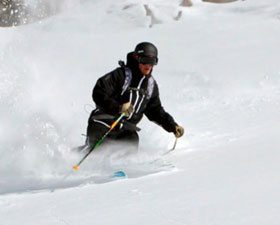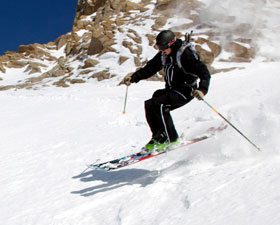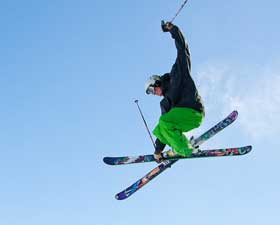 Ski: 2011-2012 Rossignol Sickle / 2010-2011 Rossignol S6, 186cm
Ski: 2011-2012 Rossignol Sickle / 2010-2011 Rossignol S6, 186cm
Dimensions (mm): 140-110-133
Turn Radius: 21.3 meters
Actual Tip to Tail Length (straight tape pull): 182.3 cm
Boots / Bindings: 2012 Dalbello Il Moro T Comp (28) / Marker Griffon / DIN (10)
Mount Location: +2 cm
Test location: Alta Ski Area / Snowbird
Days skied: 25+
If I had my way, this review would just read:
“The Rossignol Sickle, THE MOST VERSATILE SKI EVER. The end.”
But I don’t make the rules around here, and Jonathan told me I had to elaborate.
Some incarnation of the Sickle has been around for the past couple of years. The ski started out as the Scratch Steeze back in 2008, and since then, Rossignol has been tweaking the flex pattern, name, and graphics just about every season. The biggest change came in 2010-2011 with the S6, when Rossignol got rid of the ski’s traditional camber and instead incorporated “U-Rocker.” U-Rocker is Rossi’s fancy term for continuous rocker; it has no flat section underfoot, and is entirely reverse cambered — kinda like the letter “u”.
(For 2011/12, however, Rossignol has decided to call this same, continuous, reverse camber design their “Spin Turn Rocker,” presumably because spins and turns are way cooler than the letter U. Tough break, U.)
Now if your brains (and knees) are freaking out because you think the Sickle will perform like a bar of soap on anything except powder, let me assure you that this isn’t the case. The key is in the amount of rise on the Sickle. Even though the rocker runs full length, it is very slight and his minimal tip and tail splay — if you press the middle of the ski down on a flat table, the tip and tail are somewhere around a ¼” off of the surface.
So how does this translate to the hill?



















